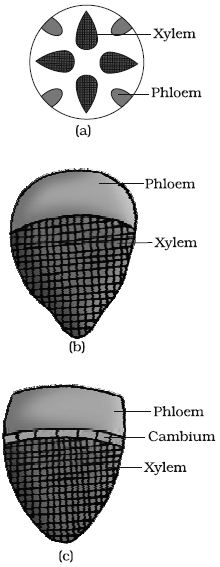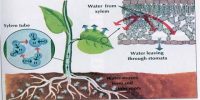The vascular tissue system consists of complex tissues, the phloem and the xylem. The xylem and phloem together constitute vascular bundles (Figure). In dicotyledonous stems, cambium is present between phloem and xylem. Such vascular bundles because of the presence of cambium possess the ability to form secondary xylem and phloem tissues and hence are called open vascular bundles.

Figure: Various types of vascular bundles: (a) radial (b) conjoint closed (c) conjoint open
In the monocotyledons, the vascular bundles have no cambium present in them. Hence, since they do not form secondary tissues they are referred to as closed. When xylem and phloem within a vascular bundle are arranged in an alternate manner on different radii, the arrangement is called radial such as in roots. In the conjoint type of vascular bundles, the xylem and phloem are situated at the same radius of vascular bundles. Such vascular bundles are common in stems and leaves. The conjoint vascular bundles usually have the phloem located only on the outer side of xylem.













